Associate Editor
- FMA
- The Fabricator
- FABTECH
- Canadian Metalworking
Understanding welding data
Weld management technology fosters continuous improvement
- By Lindsay Luminoso
- September 21, 2020
- Article
- Welding
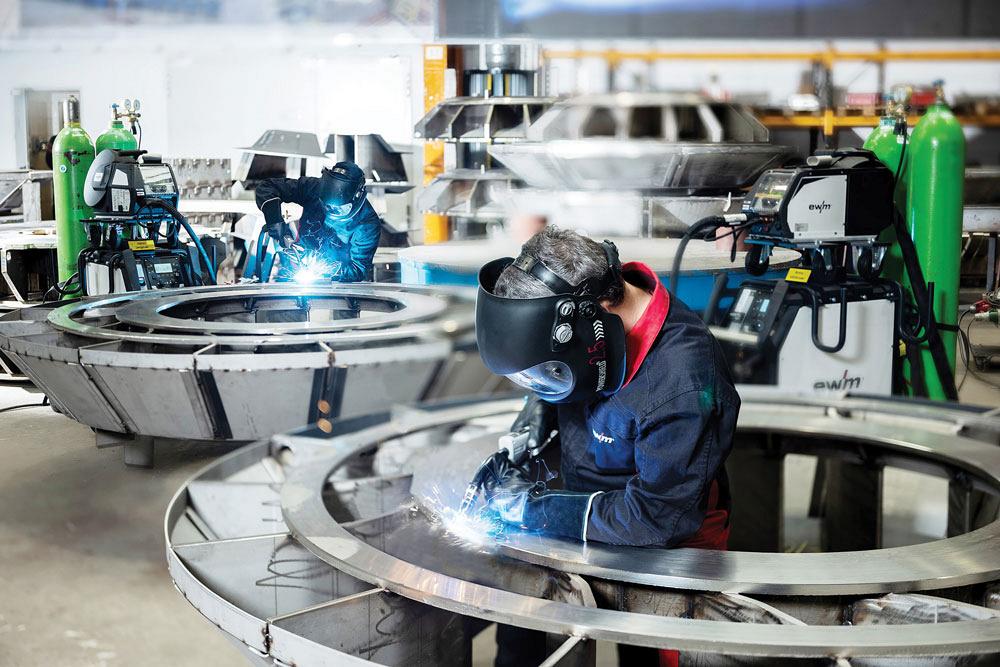
Shops can monitor and track welding activity and provide the necessary data to help drive change in the welding process and the overall production process. Photo courtesy of EWM.
Although Industry 4.0 has been gaining traction in the manufacturing industry as a whole, the welding sector seems to be lagging. For many years fabricators have struggled with improving the efficiency of their welding operations, largely because there was a gap in technology to help determine areas for improvement.
Even with continuous improvement, without a proper and complete way to track results, it was difficult to determine the efficacy of both small improvements and sweeping changes. Now, however, welding information management systems can help companies monitor and track daily activities and provide the necessary data to help drive change both in the welding process and the overall production process.
Today’s weld management technology varies from the most basic recording programs to advanced, closed-loop, autonomous systems, with a range of options in between. Depending on a company’s production strategy and business goals, there is something out there for everyone. But first shops need to consider a few things before jumping right in.
Ensuring that the proper infrastructure is in place, whether that is upgrading Wi-Fior working with the IT team to get everything set up for the technology, is the first step in the implementation process. Second, it’s important for a company to ensure the security of data and determine who has access to it or the company’s network. Data security is essential.
Getting everyone on-board is also essential to the success of any system. Employees must buy into the system if they are to actively use it and engage with it regularly. Shop managers should discuss with employees what type of data will be collected and how it will be used.
Here are just four ways that the data can be used:
1. Increase Traceability
"Welding is a very important process, and if not done properly, there can be serious, if not fatal, consequences," said Tiago Pereira, lead product manager for WeldCloud Notes, ESAB, Lisbon, Portugal. "The welding process hasn’t changed all that much over the years, so we have really focused on the documentation side of things to give welders, engineers, and the industry data that will help track and optimize the process."
One of the big trends in the manufacturing sector, particularly as it relates to large automotive OEMs, is the importance and reliance on documentation for traceability. OEMs want to ensure that they have the appropriate data from Tier 1 and 2 suppliers, especially in light of recalled components. Having the necessary documentation and data helps large companies track quality assurance issues.
The oil and gas industry is another sector that has seen a big push in documenting all critical component work, especially welding of safety-critical components. Having the necessary data helps ensure product safety and highlight any areas of improvement from a safety standpoint.
"If a company can see all the welding information and then pass that on to the customer if needed or see the information from subcontractors, then there is huge transparency and accountability," said Leon Hudson, technical support national manager, Fronius Canada Ltd., Mississauga, Ont. "We are seeing from a quality control perspective that companies want to trust the supplier. Having the welding data available to demonstrate that parameters were followed helps support the trust in the quality of the part. It offers safety security in critical components, but it can also be a competitive advantage that shops are not only providing the part, but the process data as well."
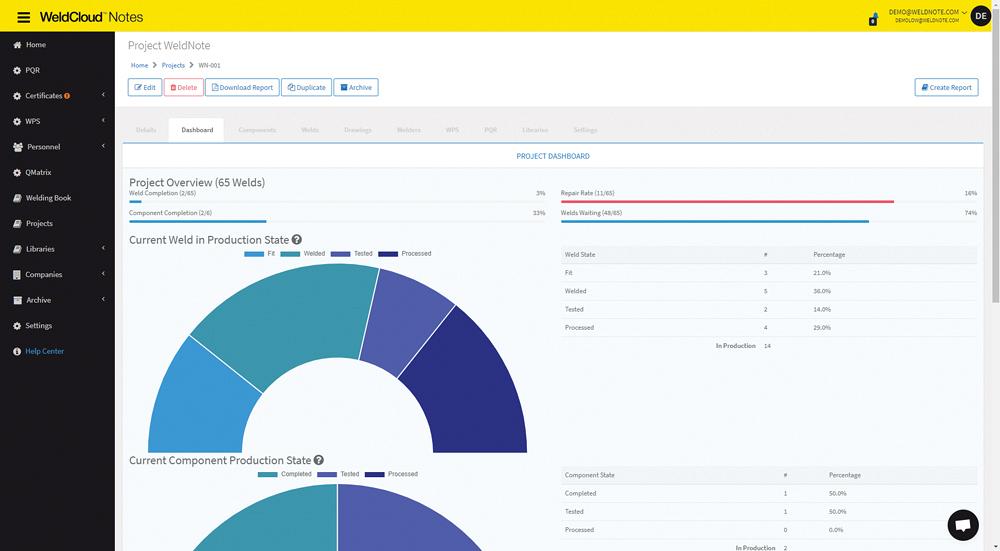
Historical data in the system helps track which welders are getting a lot of repairs. It can help determine if additional training is needed or if the process needs to be adjusted. Photo courtesy of ESAB.
More and more companies within the supply chain are requiring this type of documentation, meaning that many shops are having to implement weld management technology to collect the data. Some companies have found that this data collection even wards off potential warranty problems.
"We had a customer that welded 30-ton or so trailers for trucks," said Stanislav Wiens, deputy head of digital welding solutions, EWM, Mündersbach, Germany. "This customer had an end user that was constantly overloading the trailers so they would break down, and then the end user would want it fixed based on the warranty."
That’s where having weld management technology is important. The system recorded everything for the customer. It’s as easy as going into the system and typing the serial number, working order, or whatever tag is needed. All of the process parameters, welder certificates, and welding procedure specifications (WPS) information are in one place and easily indexable.
"The customer was able to demonstrate that the weld was fine," said Wiens. "It was determined that the end user was overloading the trailer. Most of the inquiries for the warranty disappeared after the shop implemented this welding management system."
2. Improve Weld Quality
Having clear and accurate WPS is an important first step. A shop usually does this by going through the procedure qualification record (PQR) and ensuring that the limits and values are all within the acceptable range.
"However, it’s important that the procedure is productive as well," said Pereira. "Some systems have the capability to duplicate the PQR and allow the user to modify it to produce a more productive WPS, ensuring that all the values are correct and that production is efficient. These two documents can be linked so that if the user tries to do something out of compliance, the software will code-check and report errors. It’s quite important for fabricators when they’re dealing with customers, because it just makes everything so much faster and avoids any mistakes getting into the actual work."
Beyond documentation, weld management software provides the necessary data for welding supervisors to make important decisions about work orders and shift changes.
"The welding supervisor is able to go into the dashboard and monitor changes in the welding parameters over the history of the equipment," said Hudson. "The supervisor is able to compare welding settings and go back to a setting that worked best. Moreover, the system can also influence the quality of work and help keep the operator within set out parameters or the code that they are supposed to be welding within. These parameters can be seen and adjusted in real time."
This real-time feedback is important. Hudson explained that if a project needs to be welded at a specific voltage, amperage, and wire feed speed, if the welding machine goes out of this range because of machine fault, failure, or user input, the software documents the breach of parameter limits. Depending on the system, the machine itself could shut down if it is out of specification or it could be set to send a graphic to the dashboard or an email to outline the fault. The data management system also documents any repair of the non-compliant weld. It really depends on what the shop is looking for, and many different options are available on the market to meet its needs.
"Historical data in the system will also help track which welders are getting a lot of repairs," said Pereira. "Perhaps this welder needs a bit of additional training or should be adjusting the process to weld better. It could be an equipment issue that the owner can take note of. It can also determine if a procedure has been wrongly introduced into a weld."

With data like the current, voltage, wire feeds and speeds, type of welder, and WPS used, shops can make informed decisions about the best course forward with their equipment and ensure that machine downtime is minimized. Photo courtesy of EWM.
For training purposes, a weld management system can compare historical data. The performance of longtime welders can be compared to others within the shop to see how effectively certain shifts are running.It also helps to ensure that certain welders are not overloaded with work orders beyond their capability.
3. Reduce Costs
This technology is also great from a maintenance standpoint as it can track trends in how often equipment is being used, which machines are most efficient, as well as those requiring troubleshooting.
"The shop can also get information to help with predictive maintenance," said Wiens. "The system can be set up with calendar notifications to let the shop know if a machine requires cleaning or if it requires a risk certification. It can also include a time-specific alert based on welding hours to alert when consumables may need replacing. With all the data like the current, voltage, wire feeds and speeds, type of welder, and WPS used, shops can make informed decisions about the best course forward with their equipment and ensure that there is limited machine downtime."
With the ability to track almost every aspect of the weld process, shops can input utility costs, including how much gas costs. And with this information, the system can calculate how much each weld costs or how much the part costs.
"Shops can use the data to make minor adjustments and reduce their overall costs," said Hudson. "When quoting a job, having these metrics and calculations will help provide a more accurate representation of the overall costs, as well as welding time, energy consumption, and consumable usage."
Quoting is one of the biggest areas of opportunity for shops, especially those with large inventories or project portfolios. The time it takes to quote a project and go through all the variables can be several days. With weld management software, a shop can qualify all the specifications and the technology can sort through all the relevant data for the qualification range.
"For large projects with lots of different configurations, I would have to go through my whole list of documents to see if we’re qualified for each one of them," said Pereira. "And as you can imagine, this took me a lot of time to make it efficiently and at a guaranteed price point. It was inefficient and could be costly if not done correctly. The weld management technology takes all the guesswork out."
4. Manage Non-welding Activities
Beyond the actual welding improvements, weld management technology also helps improve non-welding activities and the overall production process.
"This technology can help with small adjustments as well as production flow issues," said Wiens. "Some shops have the best welders and welding equipment but still see struggles; well, that could be from bottlenecks or material handling issues. This technology can provide data about the production process that informs decisions that can affect all areas of the shop floor."
Wiens added that welders are not always welding; they have many other jobs within the shop. But if a welding manager notices some inefficiencies or can adjust jobs so the welder is actually welding more, then all the better. From the data collected, shops can see, for example, if many welders are sitting idle because the shop has only one crane and are waiting upwards of 30 minutes for it. With many welders over many shifts, that is a lot of unnecessary downtime. A shop can invest in additional material handling equipment or change the production flow so there is less waiting time, improving overall production.
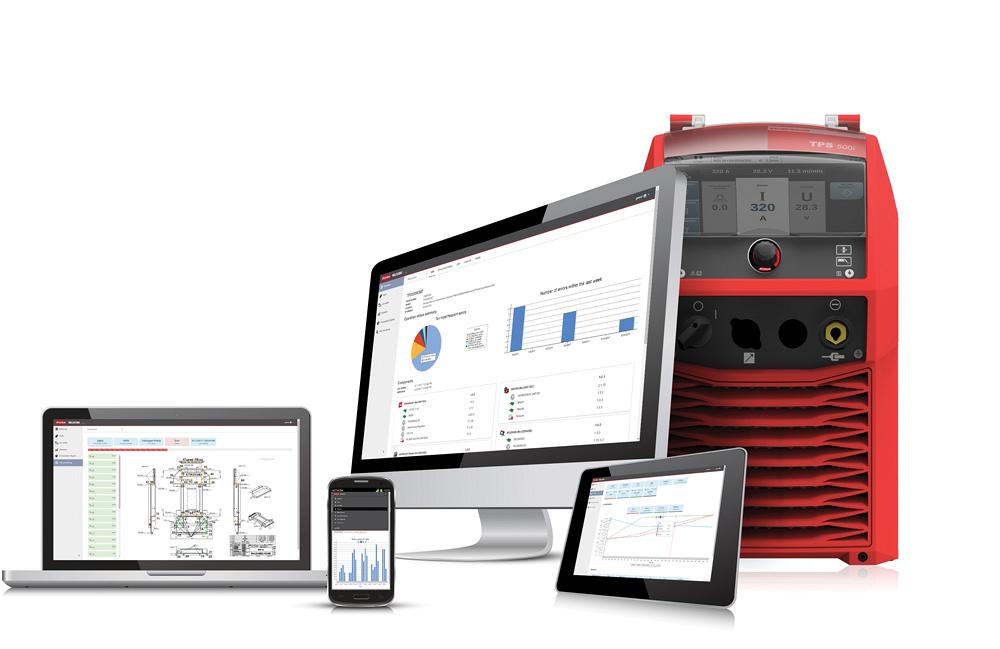
Weld management systems can influence the quality of work and help keep operators within set out parameters or the code that they are supposed to be welding within. These parameters can be seen and adjusted in real time. Photo courtesy of Fronius.
"This software is a way to automate some of the processes that welding engineers and quality assurance managers spend much of their time doing," said Pereira. "It frees them up to do other, maybe more important things that only they can do, like a welding inspection or verifying if a weld is correct. It’s also important for production improvements, examining where parts or processes can be adjusted to create a more efficient shop floor."
Associate Editor Lindsay Luminoso can be reached at lluminoso@canadianfabweld.com.
ESAB, www.esabna.com
EWM AG, www.ewm-group.com
Fronius, www.fronius.com
About the Author

Lindsay Luminoso
1154 Warden Avenue
Toronto, M1R 0A1 Canada
Lindsay Luminoso, associate editor, contributes to both Canadian Metalworking and Canadian Fabricating & Welding. She worked as an associate editor/web editor, at Canadian Metalworking from 2014-2016 and was most recently an associate editor at Design Engineering.
Luminoso has a bachelor of arts from Carleton University, a bachelor of education from Ottawa University, and a graduate certificate in book, magazine, and digital publishing from Centennial College.
subscribe now


Keep up to date with the latest news, events, and technology for all things metal from our pair of monthly magazines written specifically for Canadian manufacturers!
Start Your Free Subscription- Trending Articles
Class is in session for college connections
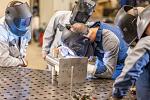
Engine-driven welding machines include integrated air compressors

Compact 2D laser machine designed for smaller shops
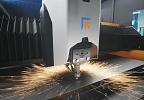
Push-feeding saw station cuts nonferrous metals

BlueForge Alliance partners with Nuts, Bolts & Thingamajigs to develop Submarine Manufacturing Camps

- Industry Events
ZEISS Quality Innovation Days 2024
- April 15 - 19, 2024
Tube 2024
- April 15 - 19, 2024
- Düsseldorf, Germany
Lincoln Electric's Large Format 3D Metal Printing Seminar
- April 16 - 17, 2024
- Cleveland, OH
CTMA Economic Uncertainty: Helping You Navigate Windsor Seminar
- April 30, 2024
- Windsor, ON Canada
MME Winnipeg
- April 30, 2024
- Winnipeg, ON Canada















